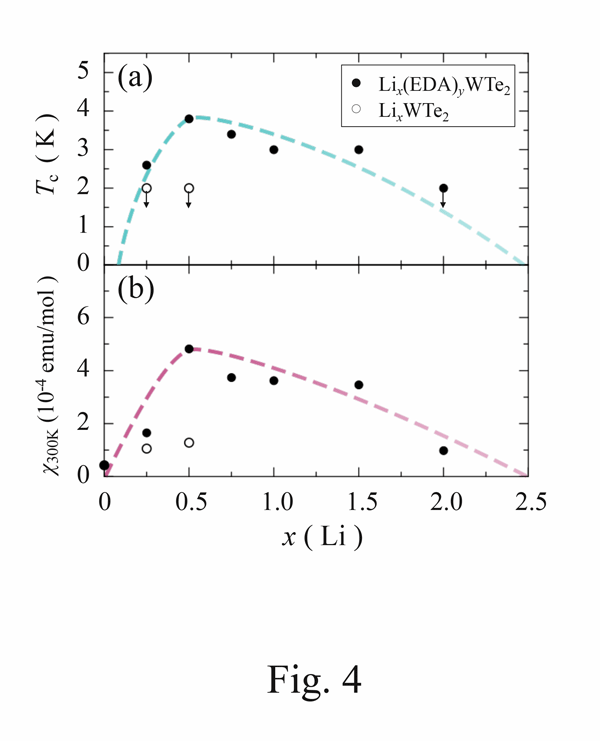PC3-2
New Lithium- and Ethylenediamine-Intercalated Superconductors Lix(C2H8N2)yWTe2
Dec.1 15:30-15:45 (Tokyo Time)
Department of Applied Physics, Tohoku University, Sendai 980-8579, Japan1
Department of Engineering for Future Innovation, National Institute of Technology, Ichinoseki college, Takanashi, Hagisho, Ichinoseki-Shi, Iwate, 021-8511, Japan2
The co-intercalation of organic molecules with alkaline or alkaline-earth metals is an effective strategy for the further improvement of the critical temperature, Tc, in the layered materials because not only carrier concentration but also two-dimensionality, namely, the electronic density of state (EDOS) at the Fermi level (EF) can be controlled simultaneously. We have reported the successful synthesis of several new superconductors in the layered transition-metal chalcogenides of FeSe and MX2 through the co-intercalation [1, 2]. In this study, we have successfully synthesized new superconductors Lix(C2H8N2)yWTe2 via the co-intercalation of ethylenediamine (EDA) together with Li into WTe2.
Host materials of WTe2 were prepared by the solid-state reaction method. The co-intercalation was carried out as follows. An appropriate amount of the powdery WTe2 and lithium metal were placed in a beaker, and then 10 ml of EDA was added. The reaction was carried out at 50˚C for 10 days. From the powder X-ray diffraction, it has been found that the new co-intercalation compound of Lix(C2H8N2)yWTe2 (x(Li) = 0.25 - 2) is successfully synthesized. The magnetic susceptibility measurements have revealed that Tc exhibits the maximum value of 3.8 K at x(Li) = 0.5, which is higher than Tc ~ 2.6 K for the K+-intercalated WTe2 [3], as shown in Fig. 1(a). It has been also concluded from the increase in Pauli paramagnetic susceptibility that the enhancement of Tc is due to the increase in EDOS at EF, as shown in Fig. 1(b).
[1] T. Hatakeda et al.: J. Phys. Soc. Jpn. 85, 103702 (2016).
[2] K. Sato et al.: J. Phys. Soc. Jpn. 87, 054704 (2018).
[3] L. Zhu et al.: Nano Lett. 18, 6585 (2018)
Fig.1 : Dependences of (a) the critical temperature, Tc, and (b) the magnetic susceptibility at 300K, χ300K, on the Li-content x(Li) in LixWTe2 and Lix(C2H8N2)yWTe2. Arrows indicate that samples are not superconducting above 2 K. Dashed lines are guide for the eyes.
Keywords: New superconductor, Intercalation, Transition-metal dichalcogenides
